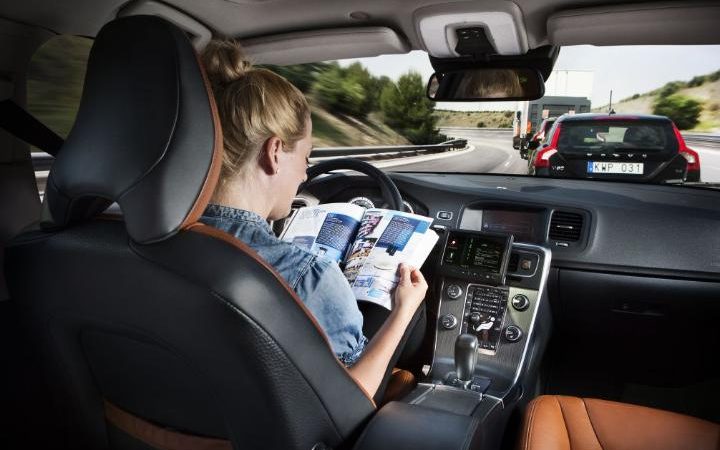Will historians look back at 2016 as the year that driverless car development accelerated?
Governments around the globe have talked about investing in research and development and creating regulations to allow more road testing. Car makers, tech firms and digital taxi businesses have pushed ahead with their development plans.
And here at Adrian Flux, we made international headlines for creating the world’s first prototype driverless car insurance policy.
So, month by month, what were the key events of the year in driverless mode?
January
Google becomes the first company in the driverless race to publish performance data in line with new laws in its home state of California. Google says its driverless “Koala” cars and fleet of modified Lexus 4x4s clocked up 424,000 miles in autonomous mode in the previous 14 months. During its tests, human drivers had to intervene and resume control 341 times … or once every 1,243 miles.
Mazda CEO Masamichi Kogai says his company isn’t developing a driverless car. Instead, emphasises that driving is fun and a pleasure, “not just getting from A to B.”
February
A driverless Lexus operated by Google collides with a bus in Mountain View, California. No one was injured, but the accident makes international news.
Following Mazda’s move, Porsche says it has no plans to develop a driverless car.
March
Nissan announces it will begin production of a new Qashqai with driverless tech at its UK production plant in Sunderland.
April
Volvo announces plans to start road trials of driverless XC90 4x4s in central London in 2017, following urban trials in Gothenburg.
May
A 40-year-old man becomes the first to lose his life in a driverless car accident after his Tesla Model S collides while in autopilot mode with an articulated truck on a Florida highway.
General Motors announces a partnership with digital ride-share business Lyft to trial driverless Chevrolet Bolts in the US.
The Queen’s Speech opening Parliament reveals the Government is planning to introduce new laws to encourage research, development and testing of driverless cars in the UK.
June
Adrian Flux becomes the world’s first insurance company to publish a prototype driverless car insurance policy. The model policy is widely welcomed – from the UK media to the Washington Post and Los Angeles Times – and fuels discussion around who – or what – is liable when an accident happens.
Rolls Royce unveils a driverless concept car called Vision Next 100 saying that autonomous vehicles do not have to be “bland”.
July
The UK Government starts a nine-week public consultation about driverless cars. Drivers, other road users, and industry are asked to give their views about the future of autonomous vehicles in Britain.
August
A fleet of modified Volvo XC90s arrive in the US city of Pittsburgh for testing by the digital taxi business Uber.
Ford announces that it is planning to build fleets of driverless cars for use as taxis or ride-share services by 2021.
Olli, a talking driverless bus, is unveiled by IBM and Arizona auto-maker Local Motors. The bus will be tested in Washington, Miami and Las Vegas to assess how humans communicate with autonomous vehicles.
Driverless taxi trials begin in Singapore.
September
Lyon in France claims to be the world’s first city to launch a regular driverless bus service. Two driverless buses begin 10 minute trips with five stops through the city; travelling at no more than 12 miles per hour and carrying only 15 passengers.
The White House releases US national guidelines for driverless car testing in an attempt to create a consistent approach to road trials across the states. It includes a 15-point safety assessment for manufacturers.
A driverless Lexus operated by Google is badly damaged at a road junction in Mountain View, California, after a van with a human driver runs a red light.
October
A two-seater electric car completes a 1km loop around Milton Keynes’ railway station to become the UK’s first driverless vehicle to be tested in a pedestrian zone during daylight hours.
Tesla CEO Elon Musk announces that every car to roll off its US production line will be equipped with self-driving tech.
November
Ford announces it will begin driverless tests in the UK in early 2017.
Road testing of driverless vehicles is approved by the first province in Canada, Ontario.
December
Apple ends two years’ of speculation and finally confirms it is working on driverless car tech. Apple says it is “investing heavily” in driverless tech, but its plans remain shrouded in secrecy.
Google spins out its driverless car operations into a new company, Waymo. There is speculation that Waymo will aim to make money from its existing driverless tech rather than push to build a fully autonomous car.
State authorities in California ask Uber to halt driverless road trials in San Francisco after a vehicle is filmed skipping a red light.
The Governor of Michigan signs “the most permissive” driverless law in the US: allowing for testing of vehicles without steering wheels or pedals.

